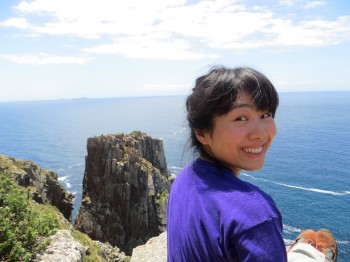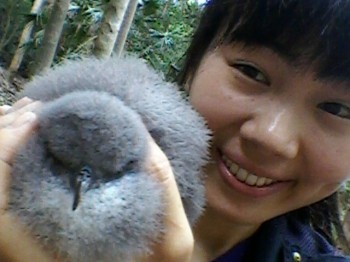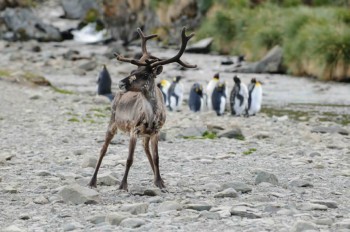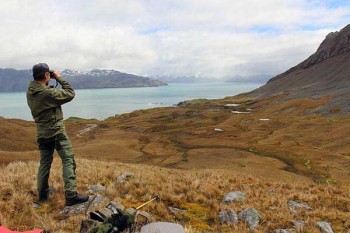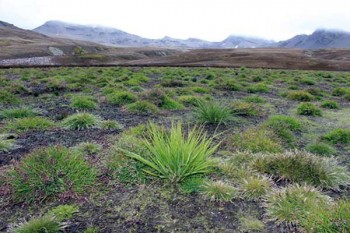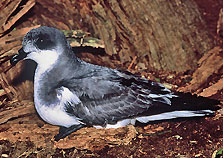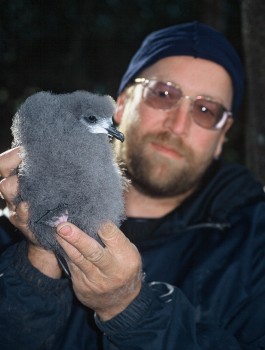ACAP Latest News has reported regularly on progress with attempts to eradicate rodents by dropping poison bait from helicopters on South Georgia (Islas Georgias del Sur)* in the South Atlantic (click here).
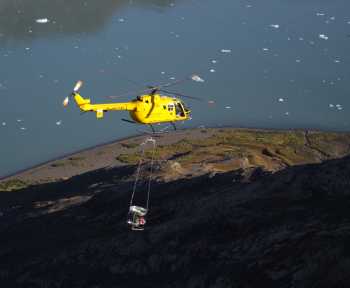
A Team Rat helicopter with slung bait bucket flies over the island
The third and final phase of bait dropping is now underway, in the southern part (35% and 360 km²) of the island. Rob Webster, Deputy Project Director of the South Georgia Habitat Restoration Project reported to ACAP this week of progress to date:
“We have passed the 50% mark - to be more precise, we sowed 33 pods of bait, which equates to a bit more than 10 tonnes of bait pellets spread today on the Barff Peninsula and takes us to 52% of Phase 3 baiting completed. We are now within about 6 hours of work from finishing that baiting zone, the largest of the Phase 3 zones - at that point we should have eradicated rats from all the land from the entrance to Cumberland Bay down to the Ross and Hindle Glaciers at the head of Royal Bay.”
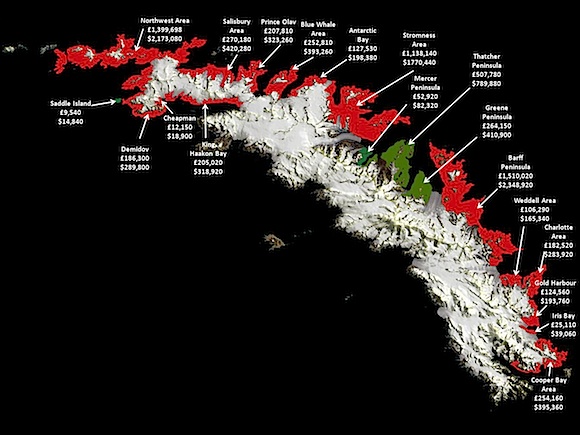
South Georgia (Islas Georgias del Sur)* showing the three baiting regions; top red Phase 2, Middle green Phase 1, bottom red , Phase 3
Daily e-mails received by ACAP from the island report that weather conditions have halted flying on a number of days this month. In addition, gale-force winds made one of the three helicopters unserviceable so “Team Rat” has had its setbacks.
Related news from the South Georgia Heritage Trust is of the finding of the first South Georgia Pipit Anthus antarcticus nest, containing five chicks, in an area previously cleared of rodents in May 2013 as part of Phase 2 of the project. The return of pipits to the main island from their refugia on offshore islets free of rats is suggestive that burrowing petrels, including the ACAP-listed White-chinned Petrel Procellaria aequinoctialis, will also fare better in the absence of rats.

The pipit nest - in the absence of rats
Click here to access Team Rat’s latest newsletter (Project News, No. 24 of February 2015) and here to read the latest on the eradication of introduced Reindeer Rangifer tarandus on the island. More conservation news is in the latest South Georgia Newsletter.
With thanks to Keith Springer and Rob Webster for information.
John Cooper, ACAP Information Officer, 25 February 2015
*A dispute exists between the Governments of Argentina and the United Kingdom of Great Britain and Northern Ireland concerning sovereignty over the Falkland Islands (Islas Malvinas), South Georgia and the South Sandwich Islands (Islas Georgias del Sur y Islas Sandwich del Sur) and the surrounding maritime areas.

 English
English  Français
Français  Español
Español 